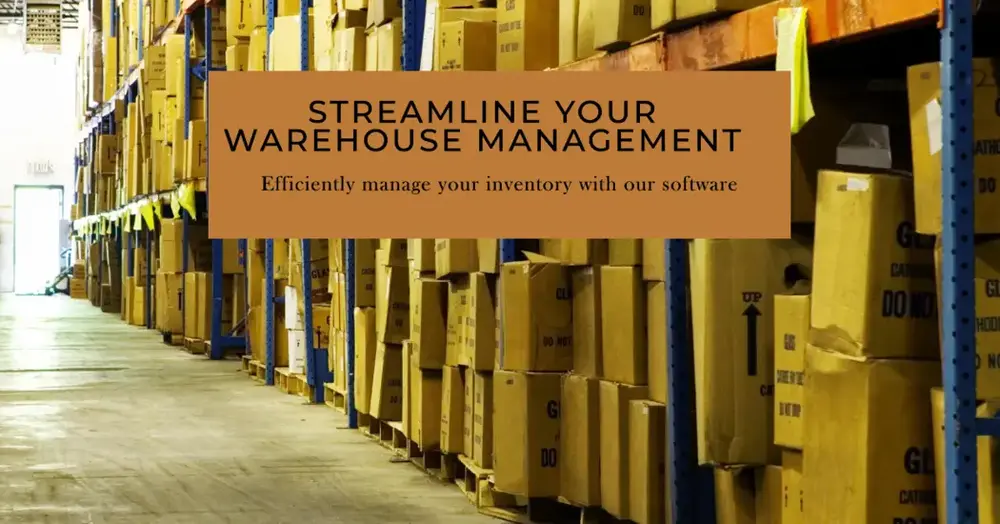In today’s competitive landscape, efficient warehouse management is no longer a luxury; it’s a necessity. Efficiency is important in supply chain management today. To remain competitive, firms must take advantage of every tool that they possess and one of the greatest tools is Warehouse Management Software (WMS). WMS software simplifies activities, enhances precision, and increases production efficiency across warehouses of any magnitude. Nevertheless, it takes more than just having WMS software; you should know how to apply it properly to obtain its maximum benefits. This guide will discuss tactics that are meant to help you make the best use of your WMS software.
This blog dives into practical steps to get the most out of your WMS, transforming it from a software program to a powerful tool that supercharges your warehouse.
Understanding your WMS Software
Before moving forward to strategies, it is important that you know what your WMS software can do.
- Inventory management: Track inventory levels and locations, as well as real-time movement of goods.
- Order fulfillment: Make the order picking and packing process seamless so that accurate and timely customer orders are fulfilled.
- Warehouse layout optimization: Create warehouse layouts that maximize storage and picking efficiencies.
- Labor management: Monitor workforce productivity, including assignment of tasks and tracking performance.
- Reporting and analytics: Access data analysis tools to help in understanding operations within the warehouse.
Benefits of warehouse management software (WMS)
1: Reduced warehouse costs
One of the foremost advantages of warehouse management is that it helps in reducing operational costs by recommending the best location and space, which helps in reducing turnaround time in transportation and also in providing the best solutions for space and floor plan analysis.
Warehouse management also helps in maintaining material rotation on a FIFO basis. The first-in, first-out basis concept helps in dispatching perishable items first and saves management costs from food waste.
2: Improve productivity
With the help of warehouse management software, there is continuous improvement. There is efficiency in the production process as there is continuous forecasting and updating, which helps to schedule outlines easily.
With the implementation of real-time information about a particular product, it helps the company reduce errors and maximize profitability.
Also, with the help of barcode and scan facilities available at each stage of the warehouse process, it becomes easier to turn them into invoices or transfer notes.
Also, with the help of WMS, management can appoint tasks to the right person at the right time, thus managing daily tasks and schedules efficiently.
3: Efficiency in the supply chain
A warehouse management system helps in optimizing the entire supply chain from inbound receipts to delivery, which helps streamline the entire supply chain.
Warehouse management software provides real-time information on when goods come in and are shipped out, which helps to avoid unnecessary activities and makes the shipment more accurate.
Also, accurate and real-time data helps to improve reliability and mitigate risk, which eventually benefits manufacturers, suppliers, customers, and shippers.
4: Inventory management
Inventory management is the first and most crucial step in streamlining the warehouse management process.
But with the help of WMS, it helps create faster inventory turnover. It helps in analyzing how much stock to store in a warehouse, as maintaining too much stock leads to a decrease in cash flow and understocking leads to backorders, which results in unhappy customers.
Thus, WMS can vastly improve inventory management, resulting in reduced time and inventory carrying costs.
5: Traceability
With the help of WMS, inventories can be easily traced according to lot, batch, and serial numbering, which will help in providing a complete history of the products.
With the help of traceability, it helps in more precious planning, allocation, and distribution of stocks. This also helps in lowering any potential redundancy. The data available through traceability is also helpful for future tracing or recall situations, if any.
Strategies for Maximizing Your Warehouse Management Software
- Proper training is essential for unlocking the full potential of your WMS software. Ensure that all warehouse staff, from managers to frontline workers, receive comprehensive training on how to use the software effectively. This includes understanding system navigation, data input, and interpreting analytics.
- The customization of the WMS software is very important as it ensures that your specific requirements are met since every warehouse operation is unique. Off-the-shelf software may not meet all requirements, and this is why customization options exist to help tailor WMS software to the user’s workflows, processes, and business rules.
- Warehouse layout optimization tools in your WMS software enable you to design layouts that reduce travel time and increase storage capacity. The data on product movement and storage conditions can be analyzed so as to develop effective picking paths and storage locations.
- For instance, by using their WMS software to optimize their warehouse layout, Company XYZ was able to reduce picking time by 20% thus leading to better order fulfillment and customer satisfaction.
- This inventory management system supports barcode scanning and RFID technology as it allows for precise tracking of stock movements within a warehouse. They also aid in error reduction, improve visibility of inventories, as well as streamline receiving, picking, and shipping functions.
- An example for implementation is when Company ABC reduced inventory errors by 50% through the use of RFID technology supported by their WMS software. This led to more accurate inventory details and fewer stockout situations.
Make informed decisions:
Leveraging your real-time data options on your WMS platform gives you full control over analytics on that system so that one can determine what course of actions should be taken based on those updates.
Continuously monitor and improve:
One should also review performance metrics and KPIs. (Key Performance Indicators) given by your WMS software at regular intervals in order to identify areas where they need improvement. This data will help in implementing continuous process optimization and best practices.
For instance, by connecting its WMS system to its ERP system, Company GHI was able to achieve visibility into inventory levels and order statuses, thereby improving coordination between warehouse operations and procurement.
Conclusion:
With these steps, you can change your WMS from a simple software program into a strategic partner in warehouse optimization. Remember, whether or not a WMS is an investment depends on how you choose to use it. Once fully unlocked, though:
- Order fulfillment accuracy will improve
- Labor costs will reduce
- Inventory management will get better
- Customer satisfaction will increase
By maximizing the benefits of your own WMS, you are well placed ahead of the competition within the challenging warehousing conditions available today.




